Related Research Articles
The 1090s was a decade of the Julian Calendar which began on January 1, 1090, and ended on December 31, 1099.
The 1170s was a decade of the Julian Calendar which began on January 1, 1170, and ended on December 31, 1179.
The 1100s was a decade of the Julian Calendar which began on January 1, 1100, and ended on December 31, 1109.
The 1120s was a decade of the Julian Calendar which began on January 1, 1120, and ended on December 31, 1129.
The 1130s was a decade of the Julian Calendar which began on January 1, 1130, and ended on December 31, 1139.
The 1140s was a decade of the Julian Calendar which began on January 1, 1140, and ended on December 31, 1149.
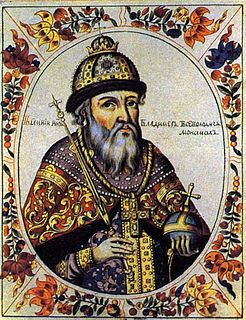
Year 1113 (MCXIII) was a common year starting on Wednesday of the Julian calendar.

Year 1115 (MCXV) was a common year starting on Friday of the Julian calendar.

Year 1121 (MCXXI) was a common year starting on Saturday of the Julian calendar.

Year 1125 (MCXXV) was a common year starting on Thursday of the Julian calendar.
Year 1111 (MCXI) was a common year starting on Sunday of the Julian calendar.

Year 1110 (MCX) was a common year starting on Saturday of the Julian calendar.

Year 1101 (MCI) was a common year starting on Tuesday of the Julian calendar. It was the 2nd year of the 1100s decade, and the 1st year of the 12th century.

Year 1180 (MCLXXX) was a leap year starting on Tuesday of the Julian calendar.
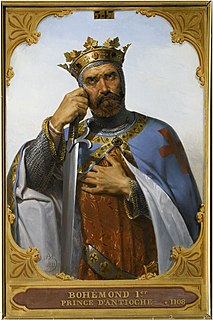
Year 1103 (MCIII) was a common year starting on Thursday of the Julian calendar.
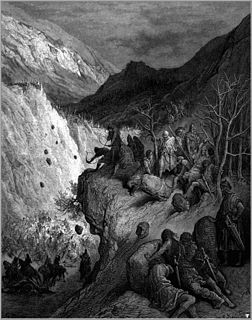
Year 1176 (MCLXXVI) was a leap year starting on Thursday of the Julian calendar.
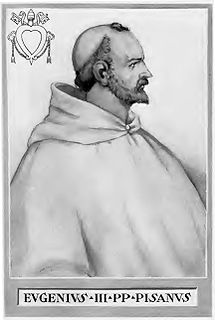
Year 1145 (MCXLV) was a common year starting on Monday of the Julian calendar.
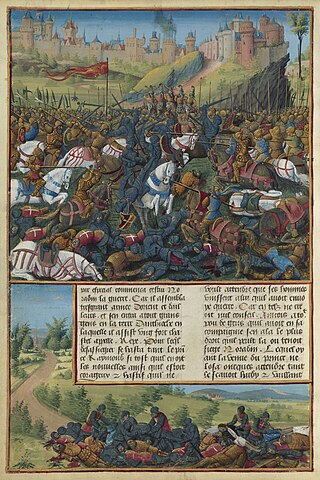
Year 1149 (MCXLIX) was a common year starting on Saturday of the Julian calendar.

Year 1104 (MCIV) was a leap year starting on Friday of the Julian calendar.

Year 1105 (MCV) was a common year starting on Sunday of the Julian calendar.
References
- ↑ Sébastien Guillet; et al. (Apr 21, 2020). "Climatic and societal impacts of a "forgotten" cluster of volcanic eruptions in 1108-1110 CE". Scientific Reports. doi:10.1038/s41598-020-63339-3.
- ↑ Steven Runciman (1952). A History of the Crusades. Vol II: The Kingdom of Jerusalem, p. 93. ISBN 978-0-241-29876-3.
- ↑ Steven Runciman (1952). A History of the Crusades. Vol II: The Kingdom of Jerusalem, p. 74. ISBN 978-0-241-29876-3.
- ↑ Steven Runciman (1952). A History of the Crusades. Vol II: The Kingdom of Jerusalem, pp. 74–75. ISBN 978-0-241-29876-3.
- ↑ Comyn, Robert (1851). History of the Western Empire, from its Restoration by Charlemagne to the Accession of Charles V. Vol I.
- ↑ Chibnall, Marjorie (1991). Matilda of England (1102–1167), Empress, Consort of Henry V. Oxford Dictionary of National Biography, Oxford University Press, retrieved 22 December 2013.
- ↑ Struk, Danylo Husar (1993). Encyclopedia of Ukraine: Volume IV: Ph-Sr. University of Toronto Press. p. 522. ISBN 9781442651265.
- ↑ Steven Runciman (1952). A History of The Crusades. Vol II: The Kingdom of Jerusalem, pp. 98–99. ISBN 978-0-241-29876-3.
- ↑ Steven Runciman (1952). A History of the Crusades. Vol II: The Kingdom of Jerusalem, p. 75. ISBN 978-0-241-29876-3.
- ↑ Picard, Christophe (2000). Le Portugal musulman (VIIIe-XIIIe siècle. L'Occident d'al-Andalus sous domination islamique. Paris: Maisonneuve & Larose. p. 109. ISBN 2-7068-1398-9.
- ↑ de Oliveira Marques, António Henrique (1998). Histoire du Portugal et de son empire colonial. Paris: Karthala. p. 44. ISBN 2-86537-844-6.
- ↑ Moody, T. W.; Martin, F. X., eds. (1967). The Course of Irish History. Cork: Mercier Press. p. 116.
- ↑ Steven Runciman (1952). A History of The Crusades. Vol II: The Kingdom of Jerusalem, p. 111. ISBN 978-0241-29876-3.
- ↑ Steven Runciman (1952). A History of The Crusades. Vol II: The Kingdom of Jerusalem, p. 76. ISBN 978-0-241-29876-3.
- ↑ Dell'Umbria, Alèssi (2006). Histoire universelle de Marseille, de l'an mil à l'an deux mille. Marseille: Agone. p. 19. ISBN 2-7489-0061-8.
- ↑ Steven Runciman (1952). A History of The Crusades. Vol II: The Kingdom of Jerusalem, p. 112. ISBN 978-0-241-29876-3.
- ↑ Steven Runciman (1952). A History of The Crusades. Vol II: The Kingdom of Jerusalem, pp.83–84. ISBN 978-0-241-29876-3.
- ↑ Steven Runciman (1952). A History of The Crusades. Vol II: The Kingdom of Jerusalem, p. 102. ISBN 978-0-241-29876-3.
- ↑ Catlos, Brian A. (2004). The victors and the vanquished: Christians and Muslims of Catalonia and Aragon, 1050-1300. Cambridge: Cambridge University Press. p. 79. ISBN 0-521-82234-3.
- ↑ Marjorie Chibnall (1991). The Empress Matilda: Queen Consort, Queen Mother and Lady of the English, p. 27. London, UK: Basil Blackwell, ISBN 978-0-631-15737-3.
- ↑ Gilbert Meynier (2010). L'Algérie cœur du Maghreb classique. De l'ouverture islamo-arabe au repli (658-1518). Paris: La Découverte; p. 86.
- ↑ McGrank, Lawrence (1981). "Norman crusaders and the Catalan reconquest: Robert Burdet and te principality of Tarragona 1129-55". Journal of Medieval History. 7 (1): 67–82. doi:10.1016/0304-4181(81)90036-1.
- ↑ Steven Runciman (1952). A History of The Crusades. Vol II: The Kingdom of Jerusalem, p. 105. ISBN 978-0-241-29876-3.
- ↑ "Fires, Great", in The Insurance Cyclopeadia: Being an Historical Treasury of Events and Circumstances Connected with the Origin and Progress of Insurance, Cornelius Walford, ed. (C. and E. Layton, 1876) p. 25.
- ↑ Steven Runciman (1952). A History of The Crusades. Vol II: The Kingdom of Jerusalem, pp. 106–107. ISBN 978-0-241-29876-3.
- ↑ Comyn, Robert (1851). History of the Western Empire from its Restoration by Charlemagne to the Accession of Charles V, p. 181.
- ↑ Pohl, John M.D. (2002). The Legend of Lord Eight Deer: An Epic of Ancient Mexico. Oxford; New York: Oxford University Press. ISBN 978-0-19-514019-4. OCLC 47054677.
- ↑ Birkenmeier, John W. (2002). The Development of the Komnenian Army: 1081–1180. Brill. ISBN 90-04-11710-5.
- ↑ Steven Runciman (1952). A History of The Crusades. Vol II: The Kingdom of Jerusalem, p. 112. ISBN 978-0241-29876-3.
- ↑ Steven Runciman (1989). A History of The Crusades. Vol II: The Kingdom of Jerusalem, p. 98. Cambridge University Press. ISBN 978-0-521-06162-9.
- ↑ Steven Runciman (1989). A History of The Crusades. Vol II: The Kingdom of Jerusalem, pp.98–99. Cambridge University Press. ISBN 978-0-521-06162-9.
- ↑ Meynier, Gilbert (2010). L'Algérie cœur du Maghreb classique: De l'ouverture islamo-arabe au repli (658-1518). Paris: La Découverte. p. 83.
- ↑ "Swansea Castle: 1100–1200 – Welsh Princes and Marcher Lords". City and County of Swansea . Retrieved 2 April 2016.
- ↑ Bresc, Henri (2003). "La Sicile et l'escape libyen au Moyen Age" (PDF). Retrieved 17 January 2012.
{{cite journal}}: Cite journal requires|journal=(help) - ↑ "Fires, Great", in The Insurance Cyclopeadia: Being an Historical Treasury of Events and Circumstances Connected with the Origin and Progress of Insurance, p. 25. Cornelius Walford, ed. (C. and E. Layton, 1876)
- ↑ Meynier, Gilbert (2010). L'Algérie cœur du Maghreb classique: De l'ouverture islamo-arabe au repli (658-1518). Paris: La Découverte. p. 84.
- ↑ Banca Ipermediale delle Vetrate Italiane, Archived 19 July 2011 at the Wayback Machine Consiglio Nazionale delle Ricerche
- ↑ G. Solinas (1981), Storia di Verona (Verona: Centro Rinascita), 244. The late eight- or early ninth-century Versus de Verona contains a now indispensable description of Verona's early medieval architecture, including Roman ruins.
- ↑ Jaques, Tony (2007). Dictionary of Battles and Sieges, p. 391. Greenwood Publishing Group. ISBN 978-0-313-33538-9.
- ↑ Bresc, Henri (2003). "La Sicile et l'espace libyen au Moyen Age" (PDF). Retrieved 17 January 2012.
{{cite journal}}: Cite journal requires|journal=(help) - ↑ Houses of Austin canons: Priory of St. Mary of Merton A History of the County of Surrey: Volume 2, ed. H. E. Malden (London, 1967). Retrieved April 9, 2015.
- ↑ Colin A. Ronan (1986). The Shorter Science & Civilisation in China: Volume 3, pp. 28–29. Cambridge University Press. ISBN 978-0-521-31560-9.
- ↑ Palmer, Alan; Palmer, Veronica (1992). The Chronology of British History. London: Century Ltd. pp. 59–60. ISBN 0-7126-5616-2.
- ↑ "Peterborough Cathedral website" . Retrieved 2007-12-19.
- ↑ The Letters of Abelard and Heloise (Revised ed.). London: Penguin. 2003. p. x. ISBN 978-0-140-44899-3.
- ↑ Stalls, Clay (1995). Possessing the land: Aragon's expansion into Islam's Ebro frontier under Alfonso the Battler, 1104-1134. Brill. p. viii. ISBN 90-04-10367-8.
- ↑ Gilbert Meynier (2010) L'Algérie cœur du Maghreb classique. De l'ouverture islamo-arabe au repli (658-1518). Paris: La Découverte; pp.86.
- ↑ McGrank, Lawrence (1981). "Norman crusaders and the Catalan reconquest: Robert Burdet and te principality of Tarragona 1129-55". Journal of Medieval History. 7 (1): 67–82. doi:10.1016/0304-4181(81)90036-1.
- ↑ Steven Runciman (1952). A History of The Crusades. Vol II: The Kingdom of Jerusalem, pp. 120–121. ISBN 978-0-241-29876-3.
- ↑ Steven Runciman (1952). A History of The Crusades. Vol II: The Kingdom of Jerusalem, pp. 123–124. ISBN 978-0-241-29876-3.
- ↑ Stratton, J.M. (1969). Agricultural Records. John Baker. ISBN 0-212-97022-4.
- ↑ McGrank, Lawrence (1981). "Norman crusaders and the Catalan reconquest: Robert Burdet and te principality of Tarragona 1129-55". Journal of Medieval History. 7 (1): 67–82. doi:10.1016/0304-4181(81)90036-1.
- ↑ Weber, N. "Petrobrusians". Catholic Encyclopedia. Retrieved 2 January 2012.